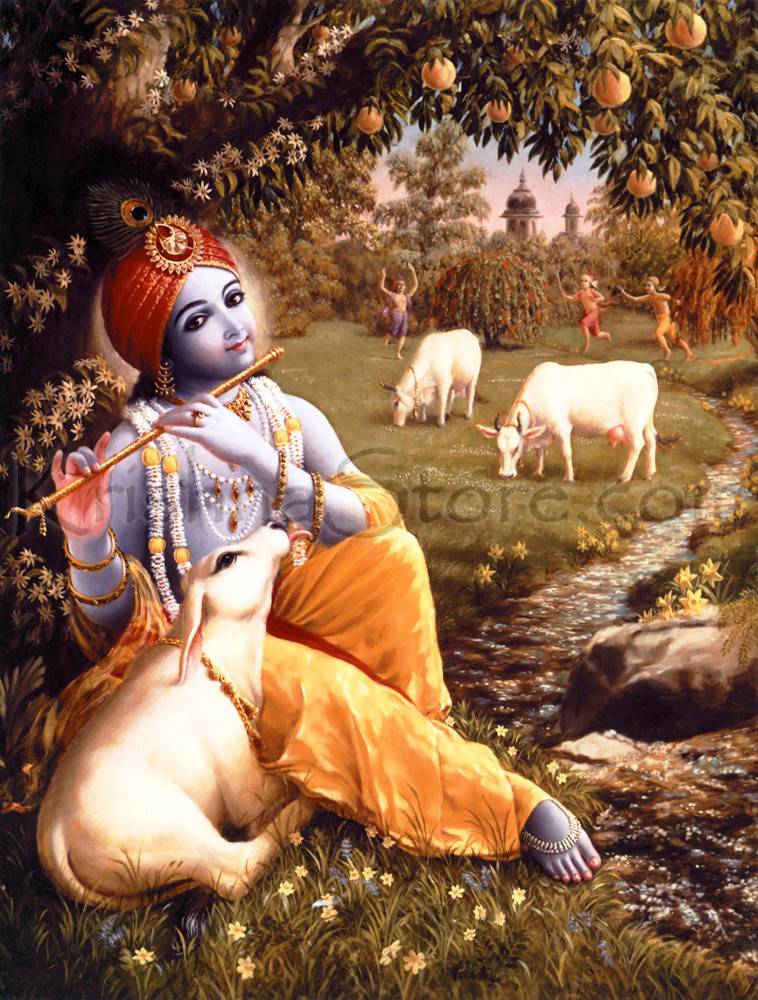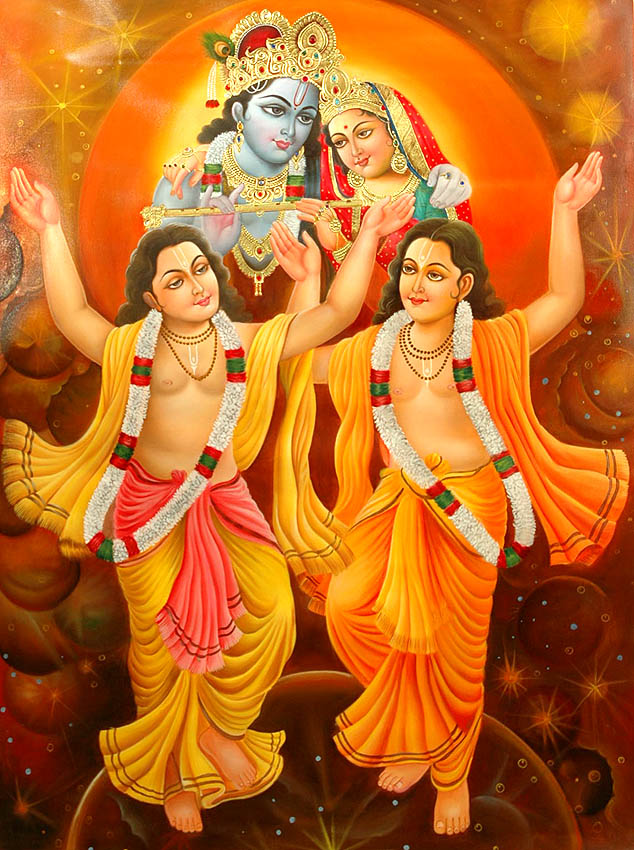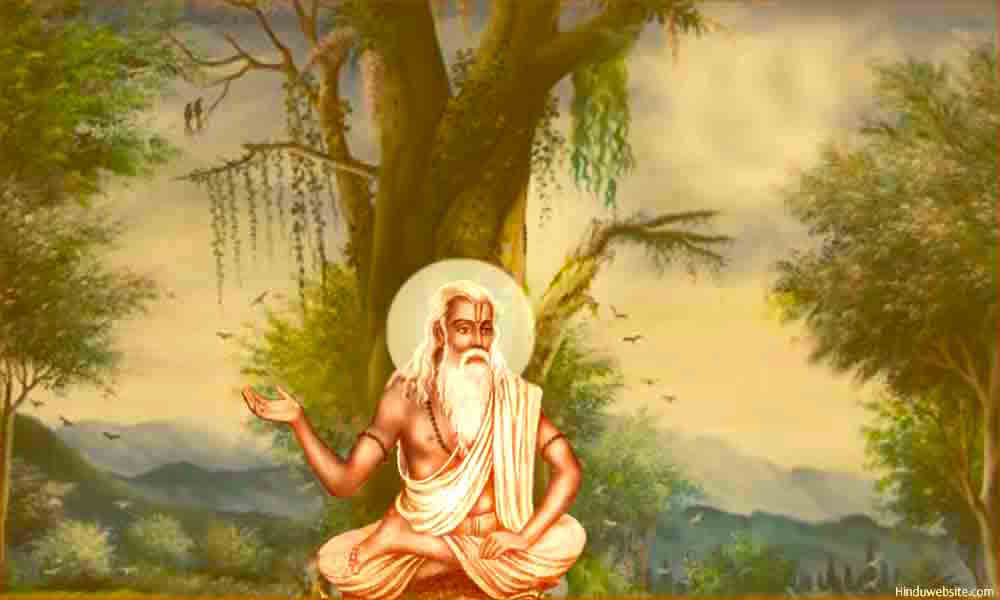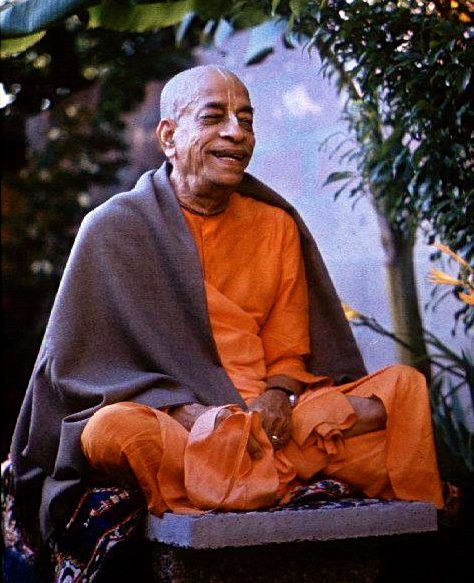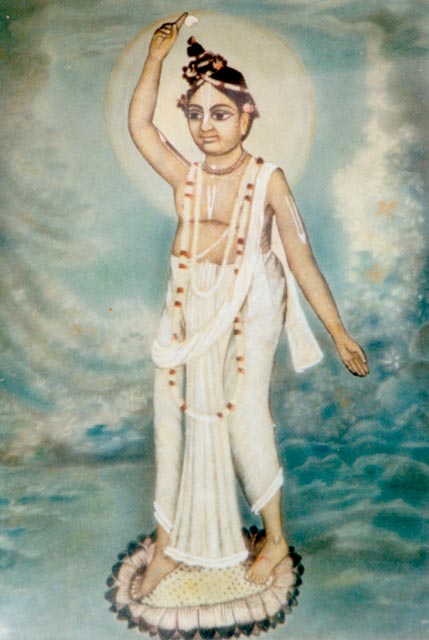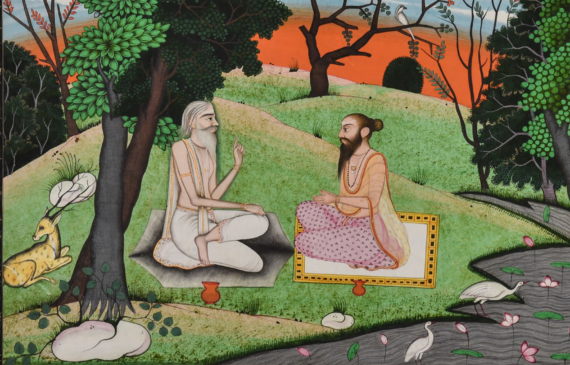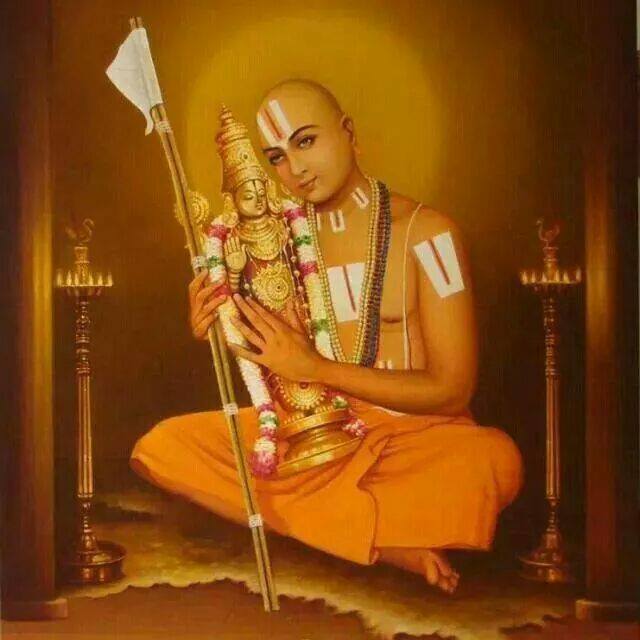Mahanidhi Madan Gopal Das
His Divine Grace A.C. Bhaktivedanta Swami Prabhupada appeared in a family of pure Gaudiya Vaisnavas in 1896 in Calcutta. From early childhood he showed signs of pure devotion to Lord Sri Krishna.
At the tender age of five, he single-handedly organized a neighborhood Ratha yatra festival to glorify Lord Jagannatha. He authentically decorated a small cart to resemble the Lord’s colossal chariot in Puri. Besides leading the kirtana party, he organized cooking and prasadam distribution.
With his enthusiasm and ecstatic love for Lord Krishna he engaged the community in chanting:
Hare Krishna Hare Krishna Krishna Krishna Hare Hare,
Hare Rama Hare Rama Rama Rama Hare Hare.
Unlike other children his age who would waste their time playing, Srila Prabhupada preferred to visit the local Radha Krishna temple. For hours together, he would lovingly gaze upon the transcendental forms of Radha Govindaji, absorbing Their divine blessings and beautiful darsana.
In his youth, Maharaja Pariksit used to dress a Deity of Krishna. Similarly, from his childhood, Srila Prabhupada also began worshiping small Deities of Radha and Krishna. He quickly mastered the traditional beats and ragas on mrdanga and harmonium. With pure devotion Srila Prabhupada would sing sweet devotional bhajanas to please Radha Govindaji.
At twenty-six, he met his eternal spiritual master Srila Bhaktisiddhanta Sarasvati Thakura (Founder Acarya of Gaudiya Math). At their first meeting, Srila Bhaktisiddhanta Sarasvati Thakura gave Srila Prabhupada a divine command: “Go to the West and spread Krishna consciousness in the English language.”
In full faith Srila Prabhupada embraced the order as his life and soul. After realizing his guru’s teachings, he started writing and distributing Back to Godhead, an English language magazine on the science of Krishna consciousness. Although begun in 1944 in a small way, “Back to Godhead” now circulates worldwide in over fifty languages.
Srila Prabhupada, like all pure Vaisnavas, showed immense compassion for the suffering conditioned souls. Although they are rotting in the materialistic life of ignorance, the stubborn conditioned souls insist that they “have no time for spiritual life.”
Neither their indifference, nor the sizzling summer heat of Delhi could keep Srila Prabhupada from distributing the cooling balm of Krishna consciousness. Once while selling Back to Godhead he collapsed on the street from heat stroke. Yet he remained fixed in his determination to please his spiritual master.
He took sannyasa in 1959 after retiring from household life. Taking shelter of Vrndavana, he rented a bhajana kutira in the Radha Damodara temple where he absorbed the association of Sri Rupa and Sri Jiva Gosvamis. Srila Prabhupada spent the next six years performing intensive Krishna bhajana.
Regularly, he bathed in Yamuna, and took darsana of Madana Mohana, Govindaji, Gopinatha, and Radha Ramana. He prayed for the mercy of the six Gosvamis and continued writing and printing. During bhajana he would receive blessings, inspiration, and direct guidance from the all merciful Sri Rupa Gosvami.
At this time, he began his life’s main literary work, an English translation with commentary of the Srimad Bhagavatam. For Srila Prabhupada it was more of a devotional outpouring than a mere translation from esoteric Sanskrit to understandable English.
Gaudiya Vaisnava history reveals that some advanced devotees would begin crying in spiritual happiness while reading the Srimad Bhagavatam. Smearing the ink on the pages, their tears would make the lines illegible. Similarly, Srila Prabhupada once said that his Srimad Bhagavatam commentaries are actually expressions of his “devotional ecstasies.”
Working alone, Srila Prabhupada wrote, begged money to print, and personally hauled the paper to publish the first three volumes of Srimad Bhagavatam. Recollecting these times, he once said humbly to his disciples:
“I did not know anything about writing. But my spiritual master told me to spread Lord Krishna’s glories in English. So this is what I tried to do, following in the steps of my Guru Maharaja. He was such a transcendental aristocrat. I had no great personal qualifications. I just tried to follow his instructions.”
Other disciples of Srila Bhaktisiddhanta Sarasvati Thakura tried unsuccessfully to preach Krishna consciousness in English speaking Europe. Srila Prabhupada, however, had full faith in his guru and Krishna’s name. Fearless as Abhimanyu, he brought Krishna consciousness to the world’s most powerful country, America.
Besides speaking English and being a “super power,” America was leading the world in the sinful activities of meat eating, illicit sex, gambling, intoxication. If Americans would take up Krishna consciousness, thought Srila Prabhupada, then surely it would spread to “every town and village,” as Lord Caitanya predicted five hundred years ago. After all, “What’s a glorious victory without a glorious fight,” which Srila Prabhupada would sometimes say.
At the age of seventy, armed with karatalas and a crate of Bhagavatams, Srila Prabhupada set off to America in 1965 on the steamship “Jaladutta.” During the arduous forty-day sea journey the ship met heavy storms. For two consecutive nights, he had severe heart attacks which almost killed him.
On the third night, Lord Krishna appeared to Srila Prabhupada in a dream. The Supreme Lord Himself was pulling the ship to America, encouraging Srila Prabhupada and giving him all protection. Srila Prabhupada penned this prayer upon reaching New York City:
“My dear Lord Krishna, You are so kind upon this useless soul, but I do not know why You have brought me here. Now You can do whatever You like with me. How shall I make them understand the message of Krishna consciousness?
“I am very unfortunate, unqualified, and most fallen. Therefore, I am seeking Your benediction so I can convince them. For I am powerless to do so on my own.
“O Lord, I am like a puppet in Your hands. So if You have brought me here to dance, then make me dance, make me dance. O Lord, make me dance as You like.”
In Manhattan, Srila Prabhupada struggled through the icy cold snowbound winter of l965. He continued writing and occasionally selling a few Bhagavatams. But for one year nothing really happened.
Gradually, a few yoga students began attending his classes on Bhagavad gita. The word spread that an “Indian swami was in town teaching a unique yoga method: chanting Hare Krishna.” After his room was robbed, he moved into a small storefront apartment at 26 Second Avenue in the Lower East Side.
In nearby Tompkins Square Park, Srila Prabhupada led the first public chanting of Hare Krishna in the Western world. On July 13, 1966, he founded ISKCON (The International Society for Krishna Consciousness) and initiated a dozen disciples.
To receive initiation disciples must promise to give up all forms of illicit sex, meat eating, intoxication, and gambling. Srila Prabhupada was well on his way to realizing his mission.
Under Srila Prabhupada’s pure guidance the Krishna consciousness movement quickly flourished. Within months ISKCON Radha Krishna temples opened in New York, San Francisco, Boston, Los Angeles, Montreal, and London. In the l970’s, he traveled around the world fourteen times, establishing 108 Radha Krishna temples in all the major cities of the America, Europe, Africa, India, Asia, and Australia.
He initiated a total of five thousand sincere disciples from different nationalities. He opened asramas and pure vegetarian “Govinda’s” restaurants. On every continent he started Vedic gurukulas and goshalas. Srila Prabhupada was the first spiritual master to introduce both elegant Deity worship of Radha and Krishna and the annual Ratha yatra festival of Lord Jagannatha in the western countries.
ISKCON’s Jagannatha Ratha yatra festivals, complete with three beautiful wooden carts carrying Lord Jagannatha, Lord Baladeva, and Lady Subhadra, a thunderous sankirtana procession, and massive prasadam distribution, take place every year in over two hundred cities worldwide.
Though constantly traveling and preaching to priests, princes, politicians, philosophers, scientists, and his disciples, Srila Prabhupada kept translating the Srimad Bhagavatam. He wrote over eighty books about Krishna, the Supreme Personality of Godhead.
Some of his most famous works are: Bhagavad gita As It Is, KRISHNA BOOK, Teachings of Lord Caitanya, Nectar of Devotion, Science of Self Realization, and English translations with commentaries on Srimad Bhagavatam, , Isopanisad, Upadesamrta, Narada Bhakti-sutras, Mukunda mala stotra, and Caitanya Caritamrta.
Prabhupada’s books appear in fifty languages such as French, German, Italian, Spanish, Chinese, Russian, Japanese, Swahili, Hindi, Bengali. And almost a billion copies have been distributed worldwide.
In only eleven years, between the ages of seventy and eighty-one, Srila Prabhupada accomplished his mission. He credited his phenomenal success to personal effort, unshakeable faith in his spiritual master, and complete faith in and dependence upon the Divine Names of Bhagavan Sri Krishna.
He was not an ordinary person. Srila Prabhupada was personally chosen and empowered by Sri Krishna and Sri Caitanya Mahaprabhu spread “Krishna consciousness” and chanting Hare Krishna all over the world.
In Vrndavana, l977, on November 14th, during the most auspicious time of Karttika, while surrounded by loving disciples singing their hearts out in kirtana, Srila Prabhupada chanted Hare Krishna and entered the eternal pastimes of Radha Syamasundara. To this day, ISKCON is expanding due to member cooperation, and the strict following of Srila Prabhupada’s ideal example of divine behavior and his pure devotional teachings.
As one of the world’s most dynamic religious and cultural movements, ISKCON has more than four hundred temples on five continents. Srila Prabhupada’s bhajan kutir and samadhi are in Vrndavana at the Radha-Damodara Mandira, and the ISKCON Krishna Balarama Mandira.
(Book Excerpt: Gaudiya Vaisnava Biographies and Samadhis in Vrndavana)

